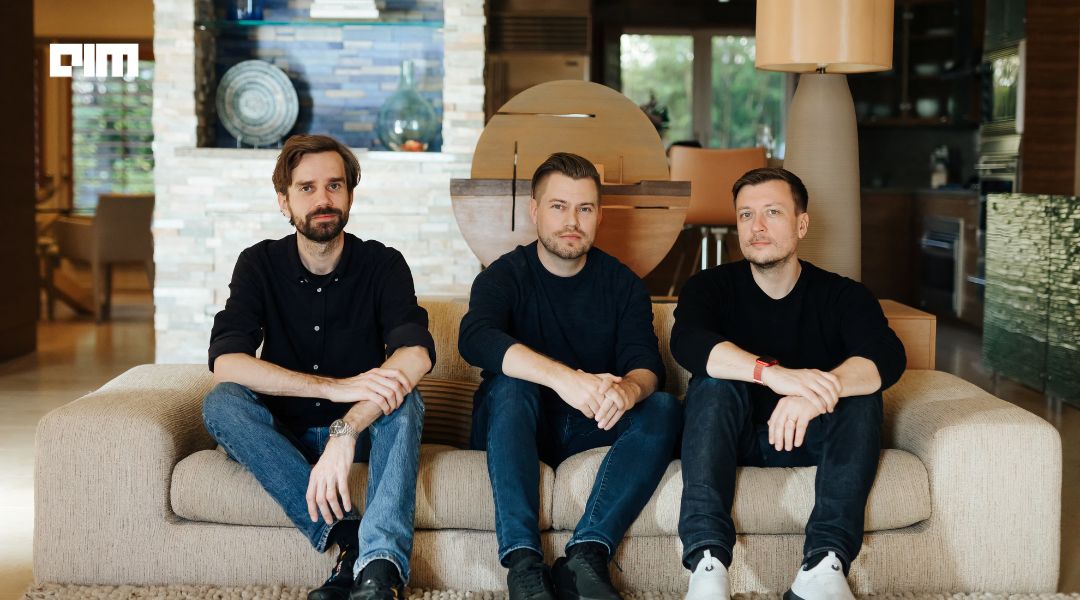

When Karri Saarinen co-founded Linear along with Jori Lallo and Tuomas Artman, he was reacting to something he had seen repeatedly at companies like Airbnb and Coinbase, engineers and product teams losing enthusiasm the moment they opened up their project management software. Legacy tools, particularly Atlassian’s Jira, had become synonymous with complexity, bloat, and a loss of momentum.
That experience became the starting point for Linear, a fast, focused, and design-forward issue tracking and product development platform that aimed to remove friction from software creation. Six years later, that thesis has gained strong validation. The company has raised an $82 million Series C round led by Accel, with participation from Sequoia Capital, 01A, Seven Seven Six, and Designer Fund. The funding values the company at $1.25 billion.
Linear plans to use the funds to build more products and expand its presence within the enterprise. CEO Saarinen says the team is focused on scaling responsibly while preserving its commitment to simplicity and performance. With only 80 employees and a remote-first setup, Linear has operated profitably since 2021 and boasts a “negative lifetime burn rate” holding more cash than it has raised.
Linear’s core philosophy stands in sharp contrast to tools like Jira, which offer high levels of customization but can overwhelm users. Instead, Linear builds for specific use cases such as sprint planning via its “Cycles” feature and bug triage via a dedicated inbox. The platform handles workflows end to end, supporting everything from customer feedback to feature delivery. Its clean interface, fast performance, and keyboard-centric design have helped it gain traction among engineering teams that previously felt slowed down by their tools.
That traction is visible in both its customer base and usage metrics. Linear now supports more than 15,000 organizations, including OpenAI, Perplexity, Cash App, Vercel, Scale AI, Supercell, and Loom. Many have migrated from incumbent platforms like Jira. In a recent independent survey conducted among software professionals, the top response to “Which tool would you switch to if your IT department allowed it?” was Linear. Users cited design quality, performance, and ease of use as key differentiators.
AI is also becoming central to Linear’s evolution. Unlike companies rushing to market with broad, generic AI features, Linear is embedding intelligence directly into its workflows. The company has introduced two parallel initiatives: “Linear for Agents” and “Linear AI.”
“Linear for Agents” is built to support the growing number of software teams deploying autonomous agents to assist with product workflows. These agents whether third-party, custom-built, or native to Linear can now be coordinated alongside human teammates. Saarinen explains that the goal is for agents to “live and work inside the same system” as humans, solving maintenance tasks, triaging bugs, or completing repetitive workflows.
Meanwhile, “Linear AI” is focused on making core workflows smarter. Features include intelligent issue creation, automated triage, categorization, and feedback summarization. Instead of launching a standalone assistant, Linear is integrating AI as a native layer across its product. These additions are designed to serve both individual contributors and teams, making the product incrementally faster and more effective without disrupting core usability.
Recent feature releases reflect this direction. Pulse, a personalized organizational feed; a revamped AI-powered search experience; Google Sheets integration; and improved media handling. Each enhancement is made with careful attention to performance, reducing friction rather than adding layers of complexity.
This approach has resonated with investors. “There are a lot of vendors that are pushing a lot of unwanted AI slop into the market,” said Accel partner Miles Clements. “The Linear team instead is clued into what users are looking for and then providing them something they want.”
That focus on the user experience stems directly from Saarinen’s philosophy on company-building. In a message shared publicly, he emphasized that Linear was built intentionally, without A/B testing, SEO optimization, or aggressive growth hacks. The company has grown slowly and profitably by focusing on strong technical foundations, not by chasing trends.
Saarinen believes that building software should be treated as a craft not a formula. “You’re creating something one of a kind,” he wrote. “It’s shaped by a very specific group of people, at a very specific moment in time. You can never really replicate that or manufacture it again.”
For Linear, this has meant resisting the temptation to follow startup conventions or to over-index on benchmarks. “We’ve resisted ‘best practices,’” Saarinen said. “We’ve learned that saying no and setting constraints can help bring clarity.” That clarity extends to hiring, product design, and even customer conversations asking why a feature is truly needed, or how it will improve the way teams work.
Linear’s measured expansion into the enterprise market reflects that philosophy. The company initially gained traction with fast-moving startups but is now growing rapidly among larger organizations. Many teams that previously said no due to procurement limitations or change management complexity are revisiting the product. As one executive noted, “It’s not that Linear doesn’t work for enterprise—it’s that some teams weren’t ready. Now they are.”
The company is not aiming to be everything to everyone. Rather, it’s focused on being the best possible system for teams that build. That stance puts it in direct competition with Jira, GitLab, and other legacy platforms. But for Saarinen, the goal has never been to replicate what came before. It’s to rethink how modern work happens and to deliver tools that teams actively want to use.
As Julian Lehr describes Linear’s compounding success its “gradually, then suddenly.”
📣 Want to advertise in AIM Research? Book here >
Cypher 2024
21-22 Nov 2024, Santa Clara Convention Center, CA
A Vendor Briefing is a research tool for our industry analysts, and an opportunity for a vendor to present its products, services and business strategies to analysts who cover the vendor specifically or a related technology or market.
AIM Research encourages technology vendors and agencies to brief our team for PeMa Quadrants, when introducing a new product, changing a business model, or forming a partnership, merger, or acquisition.


